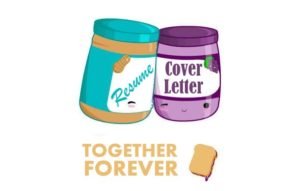
A commonly asked question of career coaches and counsellors is what to write in a cover letter or cover e-mail. [For simplicity, I’ll just use the phrase ‘cover letter’ to refer to both the written letter form and a cover e-mail.] Some people struggle about what to write and reduce the impact of their resume by sending it with a poor cover letter.
First, let us look at the purpose of a cover letter. It is intended to get the recipient to read the enclosed or attached resume – as such it is the first step in attaining a job in the job search process (the purpose of a resume is to get an interview, and the purpose of the interview is for you to show how you match the requirements for the job and thus secure it). Given its purpose then, a cover letter should entice the reader to pay great attention to the attached resume.
The following format is one you can use to persuade the recipient to just that:
Firstly, the cover letter should be addressed to a specific person in the company, preferably the appropriate hiring manager, but if you can’t find out who that is, then the HR manager in charge of recruitment. This is more personal than a “Dear Sir / Madam” and is more likely to be favourably read. If also makes it easier to follow up later. Of course, this involves a little research and sometimes a little detective work to find the name of the appropriate person, but doing so is well worth the effort.
The letter or e-mail should start by stating the specific position you are applying for and mention where you saw the job advertised. If a particular person told you about the vacancy and especially if that person works in the company, mention who ‘recommended’ that you apply. Similarly, even if the person who told you is from outside of the company but it might still be valuable or worthwhile to mention their name and/or position, make sure to do so.
The next paragraph should briefly indicate how you meet the requirements for the job applied for, and this should be done in such a way that the reader will want to see more and will therefore read the resume as well. This is the most important part of the cover letter and you must spend some time on getting the balance right between showing that you are the person for the job and becoming too long-winded! Being concise is what is required here.
You can either continue in the same paragraph or start a new one if the previous one was in any way long, by highlighting some key or relevant positions you have held. For the positions mentioned, you should select one or two very relevant responsibilities and achievements – very relevant here means that they are specifically related to one or more of the key requirements for the job. Again, you need to be very brief and concise.
To finalise, you should tell the reader how to best contact you and when.
The cover letter (or e-mail) should be no longer than one page in length – if it is longer, you need to edit it. An overly long letter or e-mail won’t be read.









